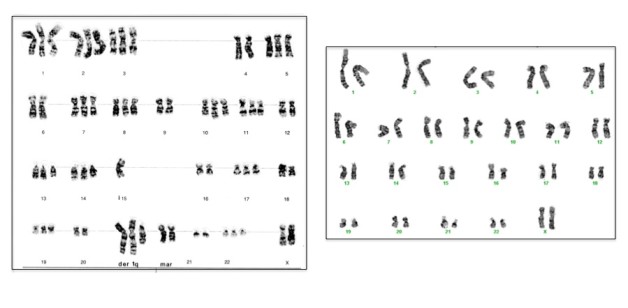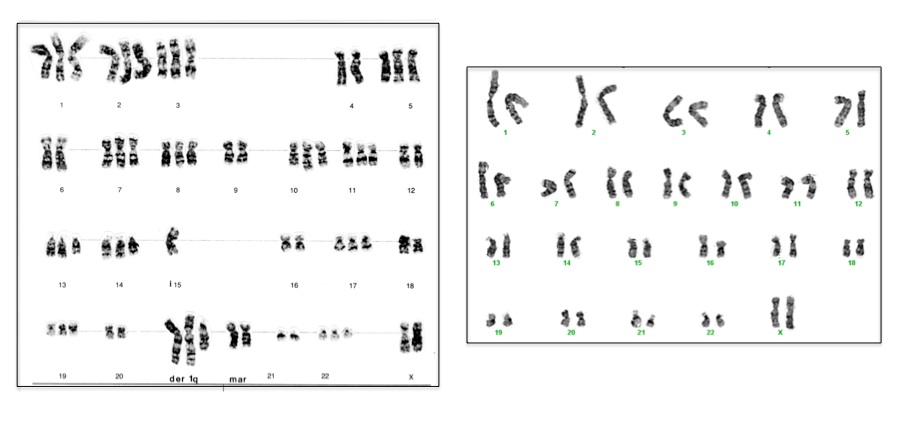Every day, some of your cells stop dividing, and that’s a good thing. Cells that proliferate indefinitely are immortal, an essential early step in the development of most malignant tumors.
Despite its importance in cancer, the process of cell immortalization is poorly understood. That’s because scientists have lacked a good way to study immortalization in human cells as it occurs during cancer progression.
Now, there is a way. As recently reported in the journal Cell Cycle, researchers from the Department of Energy’s Lawrence Berkeley National Laboratory (Berkeley Lab) have developed a new method that can easily create immortal human mammary epithelial cells.
Unlike most human immortal cells, including those obtained from tumor tissues, these newly created immortal cells have normal genomes. As a consequence, the cells could greatly facilitate the examination of cell immortalization as it actually occurs in cancer as it develops in people.
The cells may also help open up a new front in the fight against cancer.
“Cell immortalization is important to understand, but it can also be an important therapeutic target,” says Martha Stampfer, a scientist in Berkeley Lab’s Life Sciences Division.
She conducted the research with fellow Berkeley Lab scientist James Garbe, as well as Bernard Futscher and Lukas Vrba of the University of Arizona. Mark LaBarge and scientists from Berkeley Lab and other institutions contributed to this work.

The left image shows the chromosomes of an immortal cell line derived by treatment with a chemical carcinogen. It has an aberrant number and arrangement of chromosomes. This line had to generate the errors that allowed immortalization. The right image shows the chromosomes of an immortal line derived using the new Berkeley Lab method. It has the normal number of 46 chromosomes arranged in 23 pairs. Because of their normal karyotype, these new immortal cell lines may help scientists better understand cell immortalization as it occurs in people. (Image credit: Karen Swisshelm, left image; Arthur Brothman and Laura Fuch, right image).
Adds Stampfer, “Now that we have these immortal human mammary epithelial cells with normal genomes, we can study them to explore the molecular mechanisms behind cell immortality, from start to finish. We can also begin to think about ways to target this process therapeutically in order to prevent or reverse cancer progression.”
There are a couple of reasons why cell immortalization is difficult to study. Research using mice doesn’t translate well, because, like many small, short-lived mammals, rodent cells already express the enzyme required for immortality. And when it comes to human cells, there hasn’t been a tractable way to study cell immortalization as it occurs during cancer progression. There are clonal lines of immortalized human cells, and there are many cell lines derived from tumors. But these immortal cells contain large numbers of mutations. This makes it difficult to identify the errors responsible for driving cells into immortality versus the many “passenger” errors, which are secondary consequences of cancer development.
To create a new way to study immortalization in human cells, the Berkeley Lab scientists focused on a natural process called cellular senescence, in which cells stop dividing. This is believed to play an important role in suppressing cancer.
The scientists bypassed cellular senescence by targeting and overcoming two tumor-fighting barriers that cause cells to stop dividing. They did this by introducing molecular agents into the cells that are implicated in cancer development.
Cellular stress is one such barrier; too much of it, and the mammary cell induces a molecule called p16, which stops the cell from proliferating. The scientists overcame the stress barrier by using an agent that knocks out p16.
Next, the scientists went after the cells’ telomeres, which are sequences of nucleotides that protect the ends of chromosomes. After each cell division, the telomeres become shorter, and when the telomeres are too short to protect the chromosomes, the cell stops dividing. The scientists overcame this barrier by introducing a molecule called c-Myc, which reactivates the enzyme that maintains telomeres so that cell division can continue.
The result is an easy-to-reproduce procedure that yields immortal human epithelial cells. In addition, the procedure doesn’t require genomic alterations to the cells.
“That’s important. It allows us to study the mechanisms underlying immortalization as it occurs in cells with normal genomes. It’s a very good model of a critical step in cancer progression,” says Garbe. “We believe that research on these cells may stimulate new approaches for therapeutic intervention in cancer progression at the earliest stages.”
The research was funded by the National Institutes of Health, the Department of Defense, and the Department of Energy’s Office of Science.
###
Lawrence Berkeley National Laboratory addresses the world’s most urgent scientific challenges by advancing sustainable energy, protecting human health, creating new materials, and revealing the origin and fate of the universe. Founded in 1931, Berkeley Lab’s scientific expertise has been recognized with 13 Nobel prizes. The University of California manages Berkeley Lab for the U.S. Department of Energy’s Office of Science. For more, visit www.lbl.gov.
Berkeley Lab is supported by the Office of Science of the U.S. Department of Energy. The Office of Science is the single largest supporter of basic research in the physical sciences in the United States, and is working to address some of the most pressing challenges of our time. For more information, please visit science.energy.gov.
Additional information:
- The paper “Immortalization of Normal Human Mammary Epithelial Cells in Two Steps by Direct Targeting of Senescence Barriers Does Not Require Gross Genomic Alterations,” is published Oct. 29, 2014 in the journal Cell Cycle.
